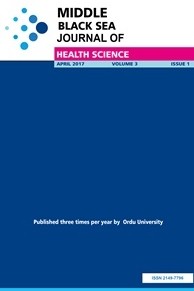Skin Traction Technique for Closure Large and Complex Skin Defects in Special Cases
Objective: During the period of COVID-19 pandemic, the reconstructive surgeons don't want to take risks of complex and long operations, and to struggle with long recovery time after surgery as well as with associated donor-site morbidity. Therefore, they prefer much more simple techniques. The objective of this study is to evidence that skin traction technique is a simple, short term, useful, and good option for closing open wound complex defect which needs the reconstruction with large flap.Methods: Skin traction techniques were applied to ten patients who had large complex defects in our clinic between March 2020 and March 2021. Patient’s data including demographic characteristic, comorbidities, causes of defects, anatomic localization of defects, size of defect, time of closure defect, time interval of tightening suture, number of tightening sutures, time of staying in hospital, general complication was recorded.Results: The study included 8 males and 2 females. The average age of patients was 42.8 years ranging from 22 to 60. The size of defects ranged between 8x5 cm and 18x10 cm with an average of 11.7x7.2 cm. The average duration of follow-up was 6 months. After 3 months, we evaluated subjectively quality of skin thickness, mobility, and colour. Skin was thinner and less mobile in the areas that were reconstructed with graft when compared with skin traction territories where the colour of skin was also normal in the cases with skin defect which was repaired by primarily closure after skin traction. All patients were satisfied with results. Complications such as skin necrosis at the traction site and hematoma were not observed. Superficial wound infection was seen in one patient, and it was resolved with antibiotherapy.Conclusions: We suggest using the traction suture technique for complex defects as an easy, cheap, and short-time procedure to reconstruct large and complex skin defects especially in recipient vessel problems, cases suffered from flap failure, patients with comorbidities and special conditions (for example, during the COVID-19 pandemic).
Keywords:
skin traction, large skin defect skin traction technique,
___
- 1. Kang MJ, Chung CH, Chang YJ, and Kim KH. Reconstruction of the lower extremity using free flaps. Archives of plastic surgery, 2013; 40(5):575.
- 2. Wen G, Wang CY, Chai Y M, Cheng L, Chen M, and Yi‐Min LV. Distally based saphenous neurocutaneous perforator flap combined with vac therapy for soft tissue reconstruction and hardware salvage in the lower extremities. Microsurgery, 2013;33(8):625-630.
- 3. Topaz M, Carmel NN, Silberman A, Li MS, and Li YZ. The TopClosure® 3S System, for skin stretching and a secure wound closure. European journal of plastic surgery, 2012;35(7):533-543.
- 4. Ryan TJ. Biochemical consequences of mechanical forces generated by distention and distortion. Journal of the American Academy of Dermatology. 1989; 21.1:115-130
- 5. Lu L, Liu A, Zhu L, Zhang J, Zhu X, and Jiang H. Cross-leg flaps: our preferred alternative to free flaps in the treatment of complex traumatic lower extremity wounds. Journal of the American College of Surgeons, 2013; 217(3): 461-471.
- 6. Chi D, Chen AD, Dorante MI, Lee BT, and Sacks JM. Plastic surgery in the time of COVID-19. Journal of reconstructive microsurgery, 2021; 37(02): 124-131.
- 7. Gibson T, Kenedi RM, and Craik, J E. The mobile micro‐architecture of dermal collagen: A bio‐engineering study. British Journal of Surgery, 1965: 52(10): 764-770. 8. Hill Sean M, and Eric T. Elwood. Pediatric lower extremity mower injuries. Annals of plastic surgery 2011: 67.3:279-287.
- 9. Marek DJ, Copeland GE, Zlowodzki M, and Cole PA. The application of dermatotraction for primary skin closure. The American journal of surgery, 2005;190(1): 123-126.
- 10. Purslow PP, Wess TJ, and Hukins DW. Collagen orientation and molecular spacing during creep and stress-relaxation in soft connective tissues. The Journal of experimental biology, 1998; 201(1): 135-142.
- 11. Zorrilla P, Marín A, Gómez LA, and Salido JA. Shoelace technique for gradual closure of fasciotomy wounds. Journal of Trauma and Acute Care Surgery, 2005;59(6):1515-1517.12.
- 12. Kocialkowski A, Marsh DR, and Shackley DC. Closure of the skin defect overlying infected non-union by skin traction. British journal of plastic surgery 1998;51.4: 307-310.
- 13. Daya, Mahendra, and Vaneshree Nair. Traction-assisted dermatogenesis by serial intermittent skin tape application. Plastic and reconstructive surgery 2008;122.4:1047-1054.
- Yayın Aralığı: Yılda 4 Sayı
- Başlangıç: 2015
- Yayıncı: Ordu Üniversitesi
Sayıdaki Diğer Makaleler
Aykut GÖKBEL, Mehmet SEÇER, Tugba GOKBEL
Hülya İNCE, Ömer Faruk AYDIN, Hasan ALAÇAM, Erhan Çetin ÇETİNOĞLU
Şebnem ALANYA TOSUN, Eda ŞAHİN, Enis ÖZKAYA, Muhammet BULUT, İsmail Buğra BİLEN, Mehmet SİPAHİ
